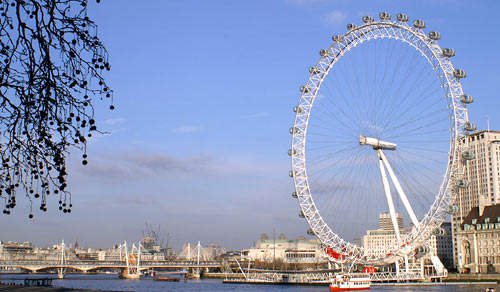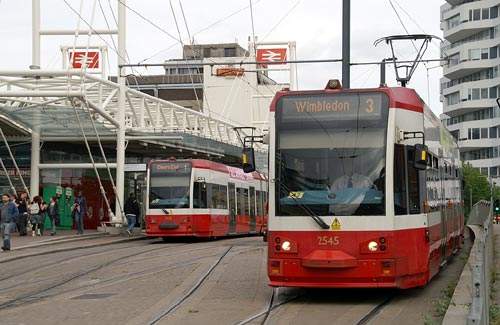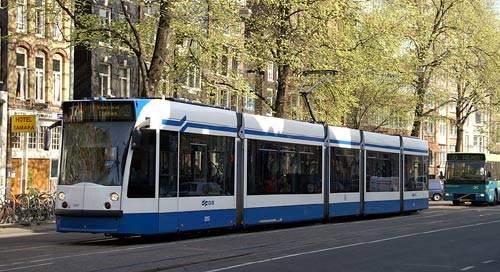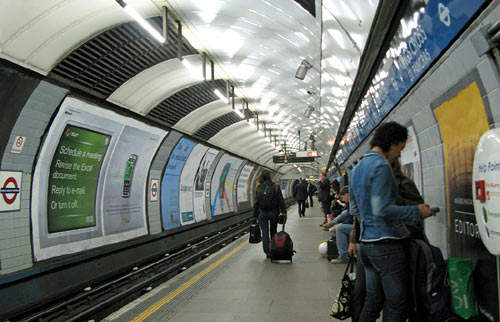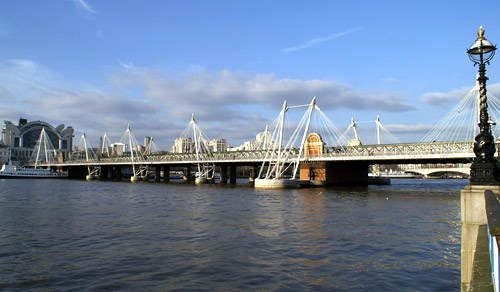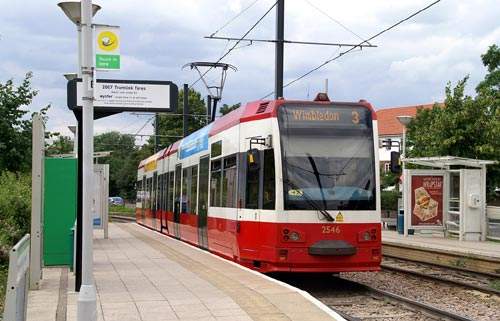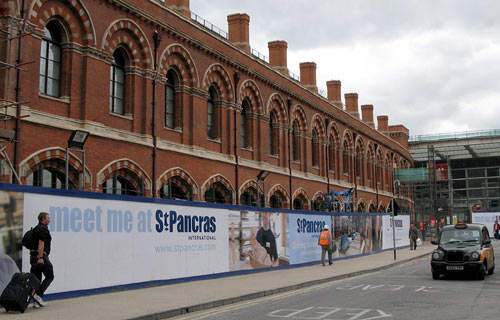The Cross River Tram (CRT) project sponsored by Transport for London (TfL) would have restored trams to the centre of the UK’s capital city after a break of over 60 years. Tramlink, which opened in 2000 centred on Croydon in the south of the London conurbation, has demonstrated the benefits of modern light rail; a local showcase that TfL has drew on to promote CRT.
A key supporter has been the Cross River Partnership, an alliance drawn from civic and private interests aiming to improve physical links and to break down perceived negative differences between the two sides of the Thames.
The project
Estimated to cost (with overrun contingency) £650m at 2006 prices, CRT combines several TfL goals within a broad aim of increasing capacity. South London did not get the coverage of Underground lines anything like that north of the Thames. Streets tend to be tightly packed and there is a lack of free-flowing thoroughfares.
Aside from dense heavy rail coverage (albeit with large gaps and relatively long distances between stops), public transport is slow and frequencies often disrupted. CRT would traverse some of the capital’s poorer districts, and with plentiful examples of light rail bringing urban revival, including nearby Croydon, CRT holds out hope of improving local economies.
With the London Congestion Charge to discourage road traffic likely to expand, the onus to provide high-standard, high-volume public transport becomes weightier. As environmental concerns rise, CRT was pushed as a far more efficient way of transporting large numbers of people than private car, taxi or bus.
The core route would give a surface rail connection between five of London’s busiest stations: Euston, King’s Cross, St Pancras International, Waterloo and London Bridge. It would also have 12 interchanges with Underground and multiple TfL bus connections, the latter subject to substantial revision to avoid needless duplication and to build a better feeder network for CRT.
A few months before the funding approval that signalled the Crossrail go-ahead in October 2007, the Mayor of London had shelved a TfL light rail scheme. Some resources dedicated to the West London Tram project, on which around £30m had been spent on preliminary works, have been reallocated to CRT.
According to TfL, the West London plan ‘may be revisited if further transport capacity is needed once Crossrail (due for 2017) is up and running’. As with the Crossrail rationale, adding an entirely new service would greatly reduce the burden on an Underground system that is busier than at any time in its history.
Infrastructure
CRT would be a double-track surface light rail link between Camden Town and Elephant and Castle, a near straight north-west to south-east axis crossing the Thames on Waterloo Bridge. At Elephant and Castle (and possibly Waterloo Station), the line would branch to the south-west for Brixton and south-east for Peckham. In the north, the tram ‘main line’ would be joined by a branch from nearby King’s Cross/St Pancras, London’s busiest rail interchange.
The route length is cited at 16.5km (10.25 miles), although this would vary according to alignments selected. Creating the infrastructure is estimated to take four years. With a peak four-minute interval to north and south branches, central London would have a two-minute interval in each direction.
Rolling stock
With the nature of future tram development uncertain, few vehicle specifics are known beyond industry norms such as step and gap-free access, air-conditioning, low floor interiors and onboard security and information systems. Multiple wide door openings would assist the rapid loading required of such a high-volume system.
To maximise line capacity, CRT envisages vehicles with space for at least 300 passengers and lengths up to 45m (the current world longest is the 54m Combino Supra Budapest).
Signalling/communications
As with rolling stock, little specification beyond prevailing standards has been identified. With a profusion of road intersections, it may be assumed that trams will be given preference and traffic signals will be interlocked accordingly. A depot in the Peckham area has been mooted and this may also be the base of the control centre.
With security having a notably high profile in London, vehicles and infrastructure would inevitably be fitted with safety systems of a high order.
CRT would become part of the TfL cross-mode ticketing arrangements and with Oyster card payments, covering buses, Underground and Overground.
The future
The reaction to CRT has been mixed, the divide between pro and anti broadly differing between the ends of the route. Stronger positive reactions were identified in the south, with distinct opposition being voiced in more affluent areas in the north. This prompted the Mayor to consider the scheme being split into two at some point.
On 6 November 2008 Mayor of London Boris Johnson (who had replaced the former Mayor in May 2008) announced that £2.4bn of transport-related savings would include the scrapping of the Cross River Tram scheme, which at the time of the cancellation was identified as a £1.3bn project.
Other TfL projects shelved were those for an Oxford Street tram and the £750m Docklands Light Railway Dagenham Dock extension, the latter of which was at an advanced planning stage. Trams as a future element in London’s public transport appear to have been further downgraded, with the cancellation of the £170m Tramlink Crystal Palace extension.
It was announced that TfL Underground improvements were to proceed, as would Crossrail and the Olympics-related transport programme, which includes the Overground East London Line.

